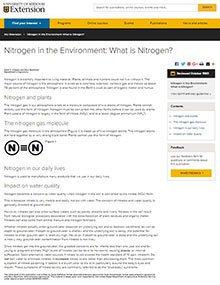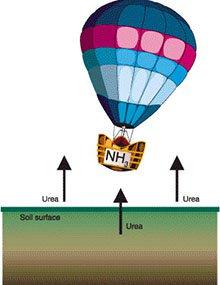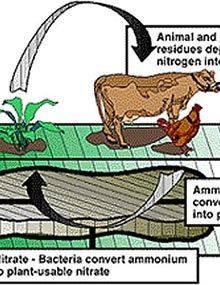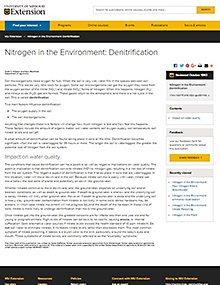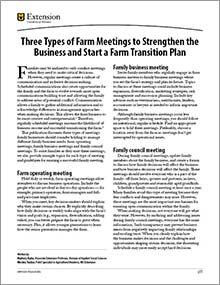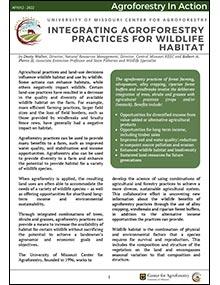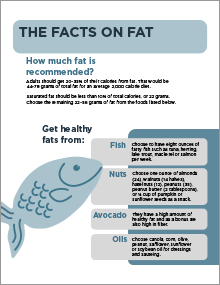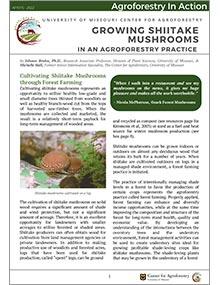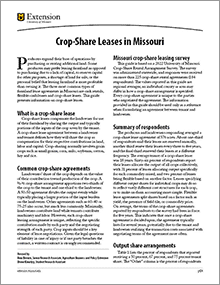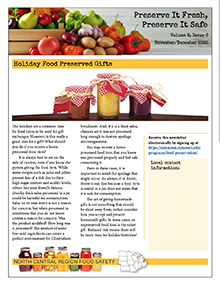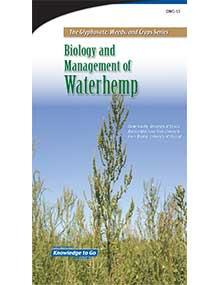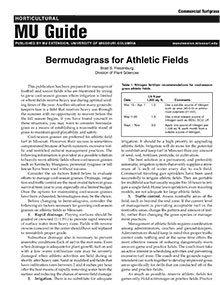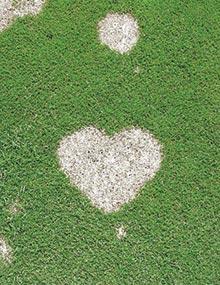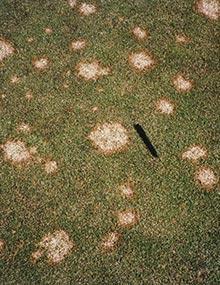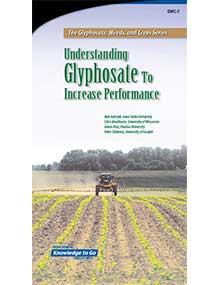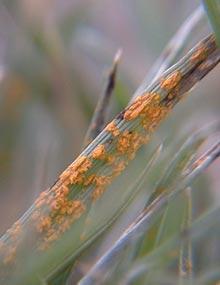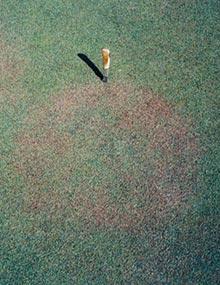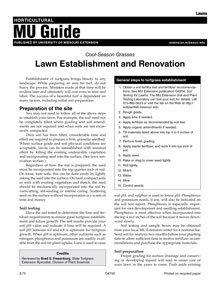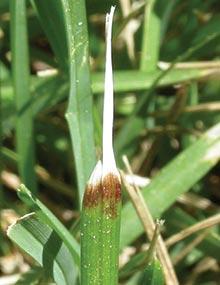Nitrogen in the Environment: Ammonia Volatilization
Reviewed
Ammonia gas can be lost from the soil and return to the atmosphere. Visit our site to learn about Nitrogen in the Environment: Ammonia Volatilization.
Nitrogen in the Environment: Nitrogen Cycle
Reviewed
Nitrogen in the soil can go through many complex chemical & biological changes. Visit our site to learn about Nitrogen in the Environment: Nitrogen Cycle.
Three Types of Farm Meetings to Strengthen the Business and Start a Farm Transition Plan
New
Use operating, business and family council meetings to build a culture of communication and inclusive decision-making in your family business. Find guidelines for running a successful family meeting, and when to use different meetings in this publication.
Integrating Agroforestry Practices for Wildlife Habitat
Revised
Learn how to incorporate management of trees, shrubs and grasses with your current farm practices to benefit white-tailed deer, eastern wild turkey, bobwhite quail, waterfowl and mourning doves.
The Facts on Fat Handout (Bundle of 25)
Revised $12
This handout explains how much dietary fat is recommended daily and provides a list of foods with healthy fats. It also discusses saturated fat and provides tips on limiting it.
Tiger Card (Bundle of 50)
Reviewed $26
Editor’s note
The following abstract describes a publication that is only available for purchase.
Economic Budgeting for Agroforestry Practices
Revised
See the steps and examples you can follow to develop enterprise budgets, create a cashflow plan and estimate economic indicators for agroforestry practices.
Growing Shiitake Mushrooms in an Agroforestry Practice
Revised
Cultivating shiitake mushrooms represents an opportunity to utilize healthy low-grade and small-diameter trees thinned from woodlots as well as healthy branch-wood cut from the tops of harvested saw-timber trees. When the mushrooms are collected and marketed, the result is a relatively short-term payback for long-term management of wooded areas.
Crop-Share Leases in Missouri
Revised
Producers expand their base of operations by purchasing or renting additional land. The three most common types of farmland lease agreements in Missouri are cash rentals, flexible-cash leases and crop-share leases. This guide presents information on crop-share leases.
Nutrient Bar Graph Cards
New $30
This publication comprises 8½×11-inch cards for more than 40 different foods. Each card includes a large colorful bar graph that displays the percent daily value for many of the nutrients found in a food.
Biology and Management of Waterhemp
Reviewed
Editor’s note
The following abstract describes a publication that is only available as a downloadable PDF.
Bermudagrass for Athletic Fields
Reviewed
Identification and Management of Turfgrass Diseases, Page 12
Reviewed
Gray snow mold is a winter turfgrass disease in regions where snow cover persists for long periods. All grasses can be damaged to some extent, but injury is often more severe on annual bluegrass and bentgrass putting greens.
Identification and Management of Turfgrass Diseases, Page 15
Reviewed
Microdochium patch is most common on new bentgrass greens under cover or in situations where nitrogen fertility was high going into the winter.
Understanding Glyphosate to Increase Performance
Review
Editor’s note
The following abstract describes a publication that is only available as a downloadable PDF.
Identification and Management of Turfgrass Diseases, Page 18
Reviewed
Rust occurs to some extent on all turfgrasses, but the rust fungi are generally host specific. Rust is most severe on susceptible cultivars of Kentucky bluegrass, tall fescue, perennial ryegrass and zoysiagrass. Rust symptoms usually appear in late August to early September and continue through the fall months.
Identification and Management of Turfgrass Diseases, Page 21
Reviewed
Take-all patch of creeping bentgrass is a soilborne disease caused by a darkly pigmented, ectotrophic root-infecting fungus. The disease is most common on new greens. It also occurs on reconstructed greens, especially when methyl bromide had been used in the renovation.
Cool-Season Grasses: Lawn Establishment and Renovation
Reviewed
Established turfgrass brings beauty to any landscape. The success of a turfgrass lawn depends on many factors, from soil preparation to seeding and watering. Learn steps for creating a beautiful cool-season grass lawn in this University of Missouri Extens
Identification and Management of Turfgrass Diseases, Page 04
Reviewed
Ascochyta leaf blight results in the rapid development of large irregularly shaped, straw-colored patches on Kentucky bluegrass and occasionally on tall fescue and perennial ryegrass during the summer. Because Ascochyta spp. are primarily foliar pathogens, diseased turfgrass usually recovers relatively quickly.
